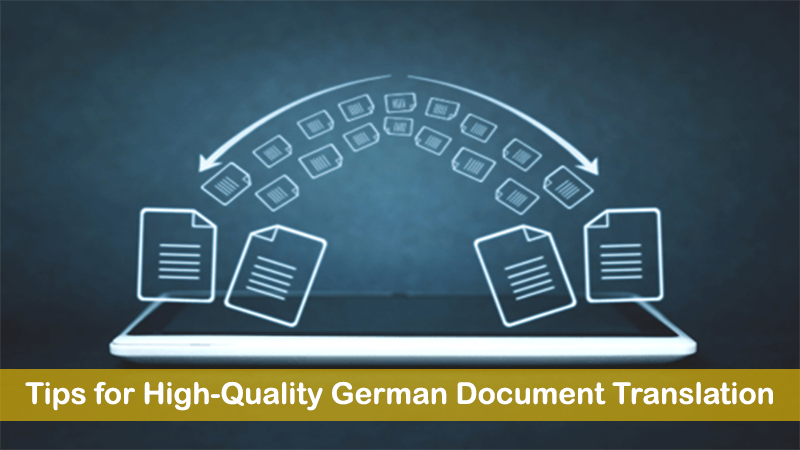For Events/Conferences/ Interpretation Services
- Ram Kesarwani - 9811 200 494
- ram@translationindia.com

TRANSLATION
German is one of the most widely spoken languages in Europe, and it is the official language of Germany, Austria, and Liechtenstein.
In addition, it is also spoken in many other countries, including Switzerland, Belgium, and Luxembourg. Given its widespread use, it’s not surprising that German document translation is in high demand.
However, translating German documents can be a challenging task due to the language’s complex grammar rules and unique vocabulary.
In this post, we’ll explore some common challenges in German document translation and provide some tips for achieving high-quality translations.
The first step in any successful translation is to understand the source text. This means not only understanding the individual words but also the overall meaning and context. German is a language with complex grammar, which can make it difficult to understand the meaning of a sentence without considering its structure.
For example, in German, the verb is usually placed at the end of a sentence, and the subject can come after the verb. This can make it challenging to understand the sentence’s meaning, especially for those who are not familiar with the language.
To overcome this challenge, it’s essential to read the entire source text before starting the translation. This will give you a better understanding of the context and help you identify any complex sentences or idiomatic expressions that may need further explanation.
Another challenge in German document translation is using accurate terminology. German has many technical terms, and using the wrong word can completely change the meaning of a sentence.
For example, the word “Gift” in German means poison, while in English, it means a presents. Similarly, the word “Handy” in German means a mobile phone, while in English, it means something that is useful.
To avoid these mistakes, it’s essential to use the correct terminology for the industry or field you are translating for. This means researching the relevant terms and ensuring that they are used consistently throughout the translation. You can also consider creating a glossary of terms for future reference.
Cultural differences can also pose a challenge in German document translation. German has many idiomatic expressions that may not translate directly into English.
For example, the German phrase “Lügen haben kurze Beine” means that lies are easily exposed, but in English, the phrase “lies have short legs” does not convey the same meaning.
To overcome this challenge, it’s essential to have a good understanding of the cultural context in which the source text was written.
This can help you identify any cultural references or idiomatic expressions that may require further explanation. Additionally, consider working with a translator who is familiar with both the German language and culture to ensure the translation accurately reflects the source text.
German grammar can be complex, and even a small mistake can completely change the meaning of a sentence. For example, in German, word order is critical, and changing the position of a single word can change the meaning of a sentence.
To ensure high-quality German document translations, it’s essential to pay close attention to grammar and syntax. This means understanding the rules of German grammar, including word order, verb conjugation, and noun declension.
Additionally, consider using grammar and spell-checking tools to catch any errors before submitting the translation.
Finally, it’s essential to proofread and edit your German document translation before submitting it. Even the best translators can make mistakes, and it’s important to catch any errors before the translation is published or shared.
So, these are the best practices to achieve high quality German document translation.
To learn more about Translation India, visit www.translationindia.com, or you can call us at 9811200494 or email us at ram@translationindia.com for further information.